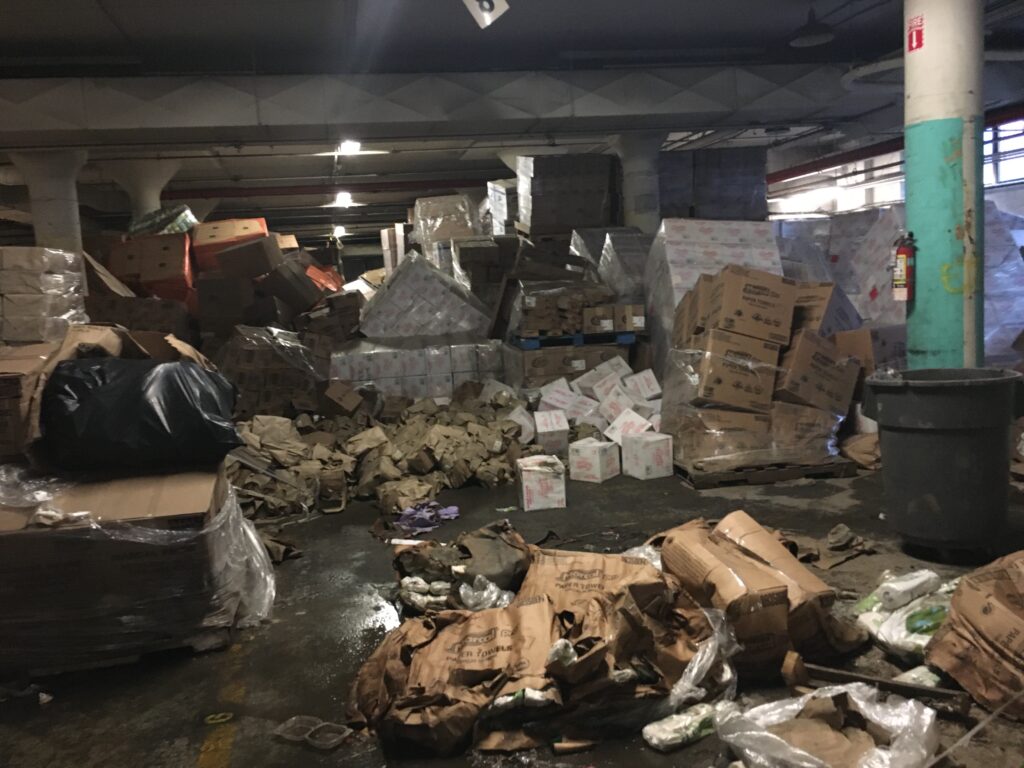
Photo of Collapsed Area in Early Phases of Project
After Hurricane Ida dumped torrential rain in NYC in 2021, a warehouse suffered an extensive loss of boxed merchandise on pallets stacked 3 to 4 levels in height (up to 14′). The loss was so extreme that all access to the main warehouse was completely blocked with products!
Sentry Salvage took the reigns and devised an action plan to open the warehouse back up. The plan required inventory work, disposal of total loss goods, recycling of paper-based and plastic wet goods based on the substrate (PolyPropylene, PolyEthylene, Paper), and segregation and grading of goods based on substrate, the extent of damage, and quality of salvage. All 3 processes needed to happen simultaneously because once we worked in a new section, the floor space was taken up.
Here is a picture after we started gaining space
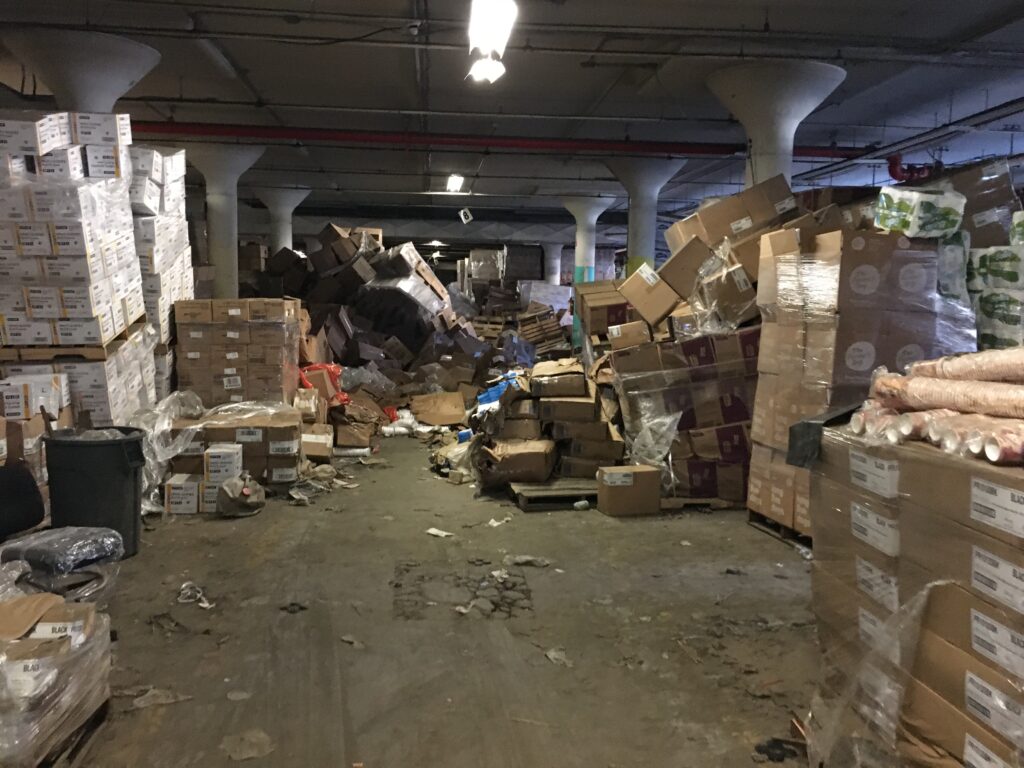
We started to gain traction, separating, and segregating the nearly 4,000 pallets of merchandise. The bottom half of each pallet was soaked with water and the boxes were weak and unstable. This caused the upper pallets to “lean” onto other pallets, concrete columns, and walls. Our “Extraction” expert team would tip the upper pallets back to level and our experienced machine operators would then scoop up the pallet with the forklift or truck, and gently place it safely on the ground.
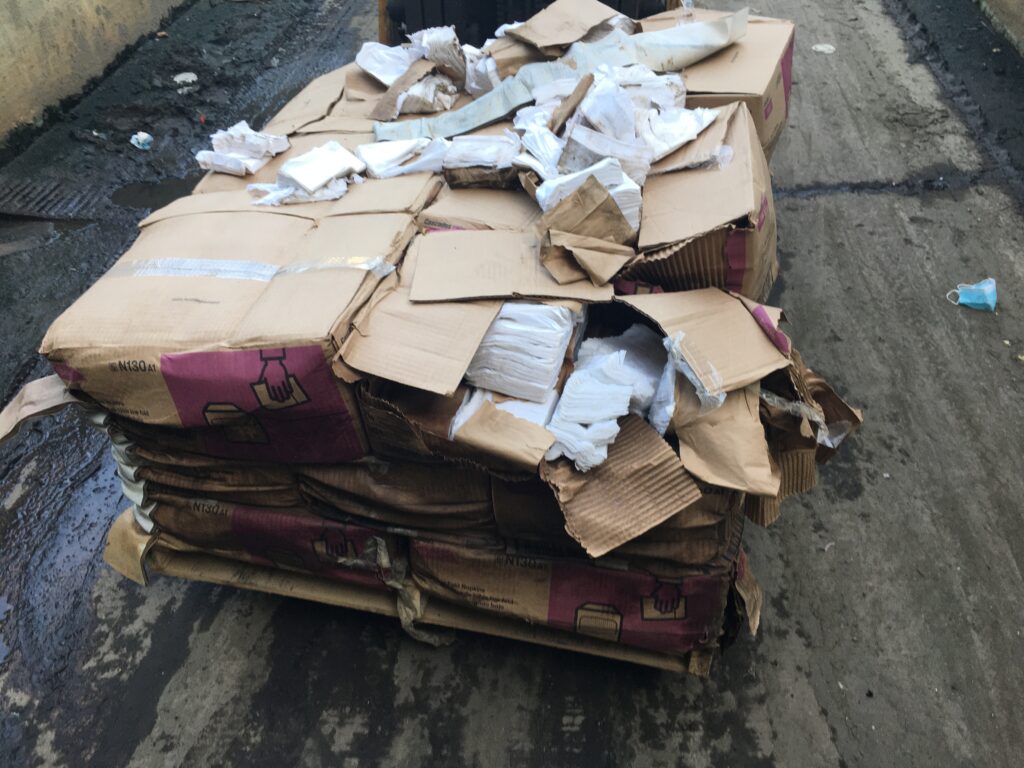
Recycling to Save Money
Sentry Salvage recycled many paper-based pallets of stock locally to lower the claim costs. A pallet such as this one weighs 100 pounds when dry and 700 pounds when wet. Today’s high cost of dumping means each pallet or lot recycled impacts your bottom line!
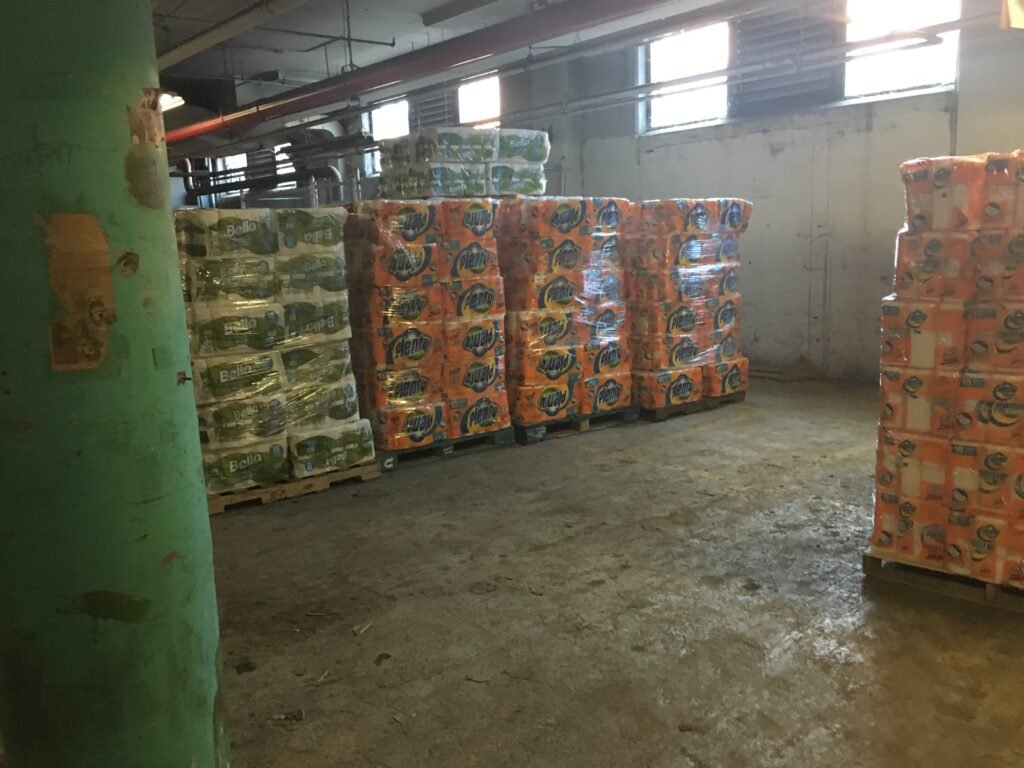
Retention Pallets – A Great Way to Reduce Costs
Sentry Salvage separated out numerous truckloads of products that were retained by the Insured which really drilled down the claim valuation. Hundreds of thousands of dollars were deducted from this claim through retention.
Rough Condition? No Problem for Sentry
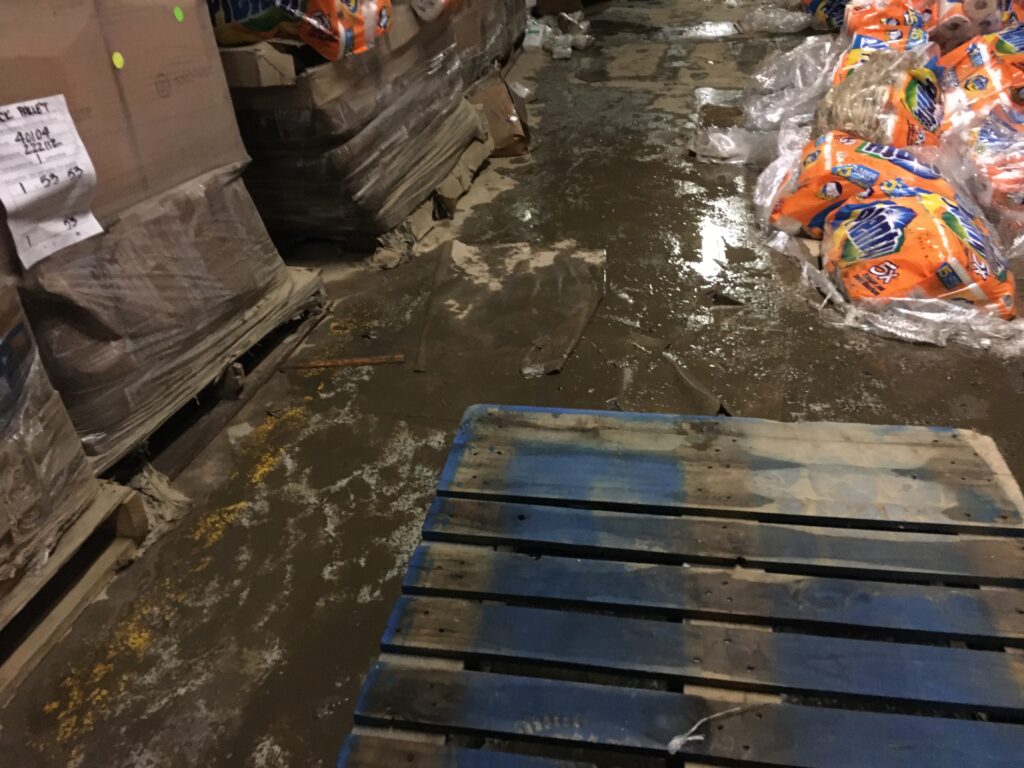
Sentry Salvage painstakingly separated out the water-damaged goods and saved the goods above the waterline. In this photo, most of the goods are paper-based, as evidenced by the bottom layer of boxes completely compressing. Many of the pallets like this were recycled without additional box breakdown or handling, thus lowering costs.
After the Segregation of Wet Stock, We Completed a Joint Inventory
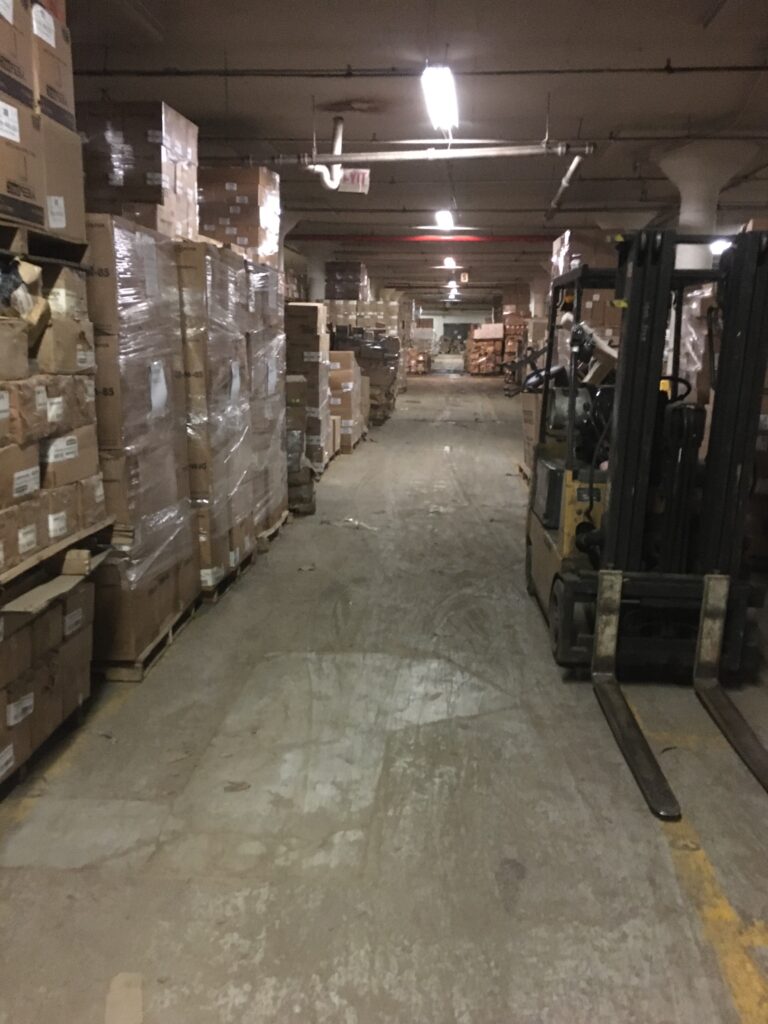
After a complete separation and segregation of wet from dry, we counted the stock with the Insured Managers. The Joint inventory was conducted over a 2-day period and included approximately 2,000 pallets of merchandise. Once the inventory was completed the sheets were double-checked for errors and submitted.
Sentry then liquidated the stock in an orderly fashion to cycle out the affected goods and finalize the claim.
Here is what the warehouse looked like when we were done removing all the stock.
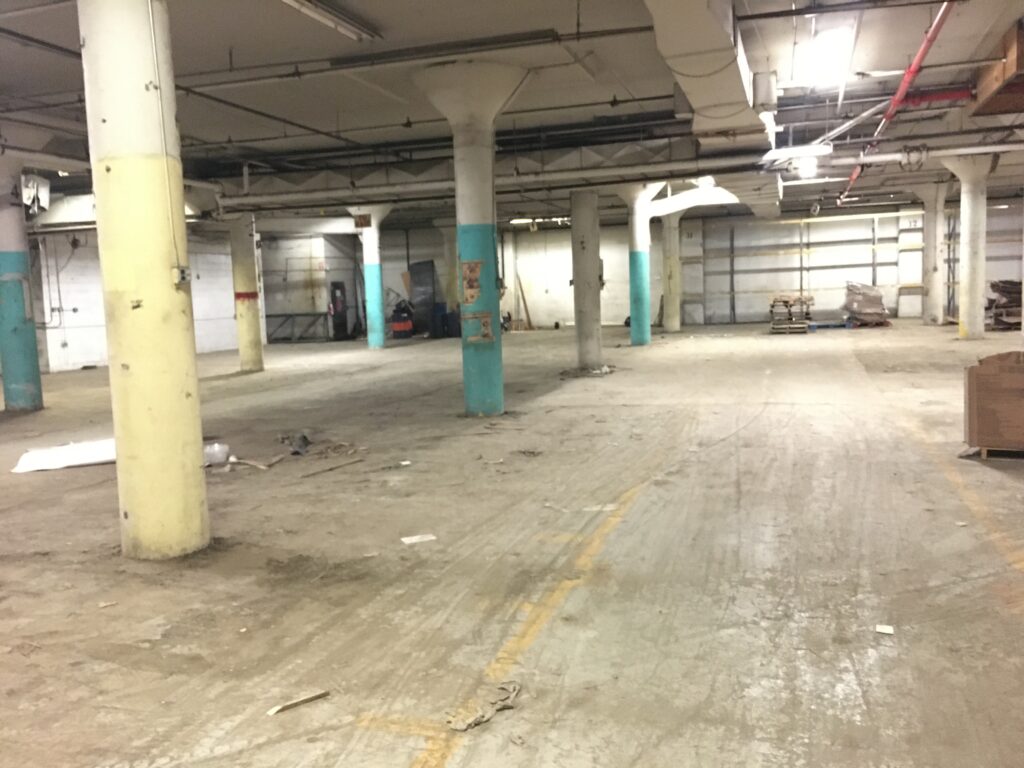
The warehouse was turned over to the cleaners/restorer for the next steps.
A very successful project that minimized costs and maximized salvage and recycling!